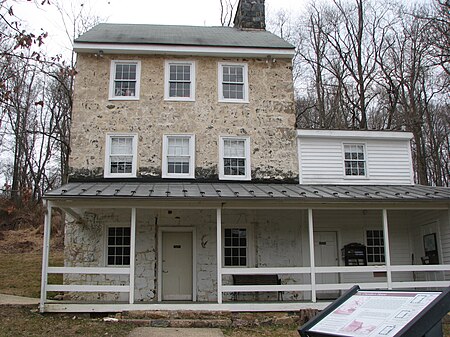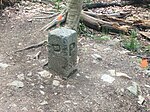Chambers House (Hopkins Bridge Road, Newark, Delaware)
1852 establishments in DelawareDelaware Registered Historic Place stubsHouses completed in 1852Houses in New Castle County, DelawareHouses on the National Register of Historic Places in Delaware ... and 1 more
National Register of Historic Places in New Castle County, Delaware

Chambers House, also known as "Stairways", is a historic home located near Newark, New Castle County, Delaware. It was built between 1816 and 1852, and is a two- to three-story, Penn Plan bank house built of uncoursed fieldstone. It has a one and two story frame addition at the east of the house dated to the late 19th century.It was added to the National Register of Historic Places in 1988.
Excerpt from the Wikipedia article Chambers House (Hopkins Bridge Road, Newark, Delaware) (License: CC BY-SA 3.0, Authors, Images).Chambers House (Hopkins Bridge Road, Newark, Delaware)
Tri-State Trail,
Geographical coordinates (GPS) Address External links Nearby Places Show on map
Geographical coordinates (GPS)
| Latitude | Longitude |
|---|---|
| N 39.727233 ° | E -75.768026 ° |
Address
Chambers House
Tri-State Trail
19711
Delaware, United States
Open on Google Maps








